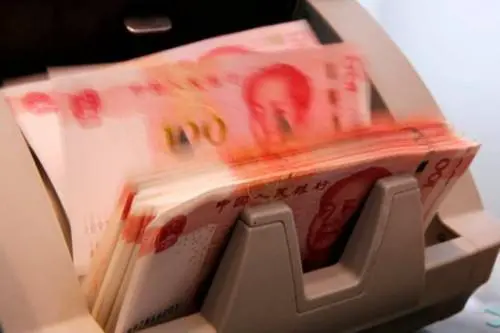Reducing non-financial enterprises’ leverage rate is viewed as key point to prevent and resolve debt risk now. Yesterday, The State Council Information Office (SCIO) organized officers from four authorities, National Development and Reform Commission (NDRC), Ministry of Finance (MOF), People’s Bank of China (PBOC, also known as the central bank of China) and China Banking Regulatory Commission (CBRC), to communicate with the media for debt-related issues.
They will keep stable economic development based on de-leverage through macro factors, gradually and orderly promote the strategies, and optimize the leverage distribution in terms of structure. The fundamental solution is to speed up the promotion of supply side reform. Over ten authorities are working together to solve the debt-related problems.
China’s overall debt level not high
SCIO’s yesterday meeting set a keynote for China’s debt problems. Its overall debt level and leverage rate are not high.
Based on different statistical calibers, the total debt scale and leverage rate are estimated to be 200 to 300 percent. Sun Xuegong, vice director of Fiscal & Finance Department under the NDRC, said in the meeting that, no matter 200 percent or 300 percent, China’s overall debt and leverage rate rank in a medium level among main economies.
Wang Kebing, vice director of Budget Department under the MOF, introduced in the meeting that, up to the end of 2015, the national debt balance included in the central government’s budget totaled at 10.66 trillion yuan, local debt was 16 trillion yuan, and national governmental debt was 26.66 trillion yuan, accounting for 39.4 percent of the GDP. This proportion will rise to around 41.5 percent, if the existing debts are all counted in, but it is still lower than the warning line set by the EU and also much lower than that in emerging markets of main economies.
Sun also pointed out that China indeed faces rapidly-rising leverage rate and unbalanced distribution in recent years, which is related to the special development situation of China as a developing country and some influencing factors. For example, in terms of financial structure, Chinese capital market is not developed enough, and non-financial enterprises still mainly rely on indirect financing, causing high debt rate in non-financial enterprises. Sun believed that such situation is possibly to spread, accumulate and expand, and it will have much negative impact, if we do not take moves.
Therefore, de-leverage is listed as one of the five major tasks for the economic work this year. Sun revealed that, due to widely-spread debt problems, many authorities need to cooperate, but they are still studying what mechanism should be carried out.
De-leverage pushed by several aspects
Currently, there is a clear conception for de-leverage, which can be divided into several aspects:
In terms of macro factor, the economy should continue to keep a smooth and stable development trend, if not, the enterprises’ operation will constantly worsen, with rising leverage rate. Therefore, positive fiscal policies and stable monetary policies should continue to avoid “hard landing”.
Strategically, efforts should be made to orderly and gradually reduce the leverage, as rapidly increasing leverage will bring in risks, and so does the de-lever.
Structurally, it should optimize the leverage distribution. Based on China’s situation, the governments and citizens-related authorities can properly raise the lever to help enterprises-related authorities for de-leverage. De-leverage measures should be different in the enterprises-related authorities based on different industries and debt term structures.
Wang Shengbang, Cautious Rule Formulation Department under the CBRC, believed that positive fiscal policies can enhance the economic growth, promote enterprises’ turnabout, and lower their leverage. Citizens-related authorities can help the enterprises in de-leverage through the ongoing mixed ownership reform. Financial authorities can transfer some assets of the enterprises-related authorities that can produce stable cash in the future to citizens-related authorities so as to transfer the leverage.
However, the fundamental measure for de-leverage is to speed up the pace to push the supply side structural reform, with many measures. One is to take various measures for supply side reform to remove low-efficient producers, push the capital shifting to high-efficient producers, improve enterprises’ profit level, and reinforce their debt repayment ability through streamlining administration and delegating power to the lower levels, SOEs reform, merging & acquisition, clearing up zombie enterprises, de-overcapacity, and reducing taxes and fees. The second is to deepen capital market reform, improve multi-level stock equity financing market, build up modern financial market system with coordinated direct and indirect financing, and constantly raise the direct financing proportion of enterprises. The third is to constantly deepen the reforms related to interest rate and exchange rate supervision.
Debt-to-equity swap being studied and tested
Sun indicated in the yesterday’s meeting that related authorities are studying and testing in line with deployment of the State Council, and mentioned that debt-to-equity swap policies are certainly market-oriented and legalized, totally different with that in 1999, which are shown in the followings:
Firstly, main market players should be fully independent in their choice on debt-to-equity enterprises, and the government had set a scope for those of last round.
Secondly, in last round, financial asset management companies received the bad debts based on book value, without discount and loss settlement. But this time, transfer price of debt-to-equity should be independently negotiated by main market players based on actual value so as to determine the market-oriented pricing for creditors’ right and stock equity.
Thirdly, the governments were responsible for the losses in last round of debt-to-equity swap, but under market-oriented condition this time, such behaviors are not allowed.
Sun also said that redline or negative list should be set on debt-to-equity enterprises, and zombie enterprises and those breaking their promise or not meeting the national policies will strictly banned from the scope of debt-to-equity swap.
(APD/XH FINANCE)
 简体中文
简体中文

